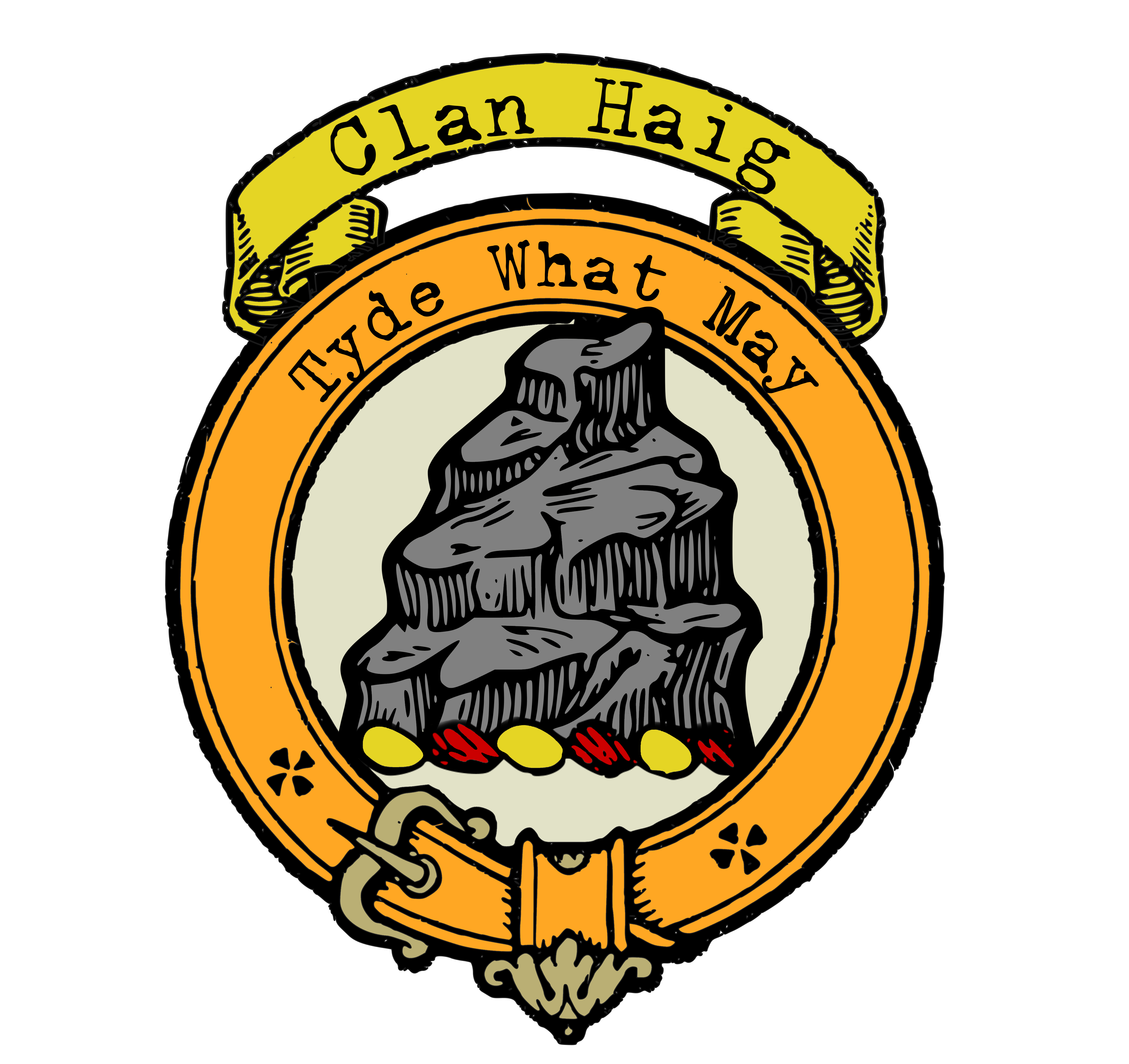Haig Clan Crest
|
|
CREST: A rock Proper MOTTO: Tyde what may TRANSLATION: Come what may VARIATIONS: N/A |
| The Scottish Clan Haig has a long and storied history dating back over eight centuries. From their early origins as a prominent family in medieval Scotland, to their involvement in the political and religious struggles of the seventeenth century, to their more recent contributions to military and political life, the Haig family has played an important role in shaping the history of Scotland and beyond.
The first recorded member of the Haig family was Petrus de Haga, who was the founder of the family and proprietor of the lands and barony of Bemersyde. He appears in a charter of Richard de Morville in the 12th century, and the family has been in possession of Bemersyde ever since. The Haigs were significant landowners even in those early times, and were among the noblemen charged with the apprehension of John de Bisset for the murder of the Earl of Athol in 1242. The Haig family fought with Sir William Wallace at the Battle of Stirling in 1297, and their sixth Laird followed Robert the Bruce to the Battle of Bannockburn. However, the family also suffered its share of losses, with the sixth Laird being killed at the Battle of Halidon Hill in 1333, and William Haig falling at Flodden in 1513. In the seventeenth century, the Haig family became embroiled in the religious and political turmoil of the time, with William Haig, the nineteenth Laird, holding the office of King’s Solicitor for Scotland during the reigns of James VI and Charles I. Anthony Haig, the twenty-first Laird, was a member of the Society of Friends or Quakers, and suffered a long period of imprisonment during the persecution of that sect. The nineteenth century saw the future of the direct line of the Haigs in jeopardy, as the three unmarried daughters of the family executed a deed transferring the succession to their cousin, Colonel Arthur Balfore Haig, of the Clackmannan branch of the family. He became the twenty-eighth Laird and chief, and later sold Bemersyde to the people of the British Empire, who presented it to the first Earl Haig in recognition of his services to the cause of freedom. The first Earl Haig, commander-in-chief of the British Expeditionary Forces in France from 1915 to 1919, was one of the most prominent members of the Haig family. He saw service throughout the Boer Wars, and during the First World War was responsible for the policy of attrition followed by the British forces on the Western Front. Although this policy has been the subject of much controversy, Haig successfully halted the German offensive by July 1918 and launched the allied counter attack which ended the war four months later. He was later created Earl Haig, Viscount Dawick and Baron Haig of Bemersyde, and received numerous other honors and knighthoods. Today, the Haig family continues to play a prominent role in Scottish life. The current chief, the thirtieth Laird and second Earl Haig, is a noted philanthropist and advocate for charitable causes. The Tower of Bemersyde, the family’s ancestral home, is a popular tourist attraction and an important part of Scotland’s architectural heritage. The history of the Clan Haig is a testament to the resilience, determination, and endurance of the Scottish people. From their earliest beginnings to their present-day contributions, the Haig family has played a vital role in shaping Scotland’s history and culture, and will continue to do so for generations to come. |
|
Citations:
|
|

Purchase @ Redbubble
Purchase @ Amazon.com
Purchase @ Amazon.co.uk

